
The Story of Soy
A story of the territory of large scale food production and the extractive and destructive nature of these practices on an inconceivable scale.
We owe soy a great deal. It’s a versatile plant enjoyed across the world in the form of a variety of fermented and non-fermented foods from tofu to tempeh. Its beans are nutritious – containing high amounts of protein, dietary minerals and B-vitamins – making it an excellent substitute for animal-based protein. Yet it is also implicated in a far-reaching agricultural-industrial complex that is driving the deforestation of the Amazon and many more biodiverse habitats across the world.
Demand for commodities such as beef, oilseeds such as soy and palm oil, and products made from timber, are among the top drivers of global deforestation.
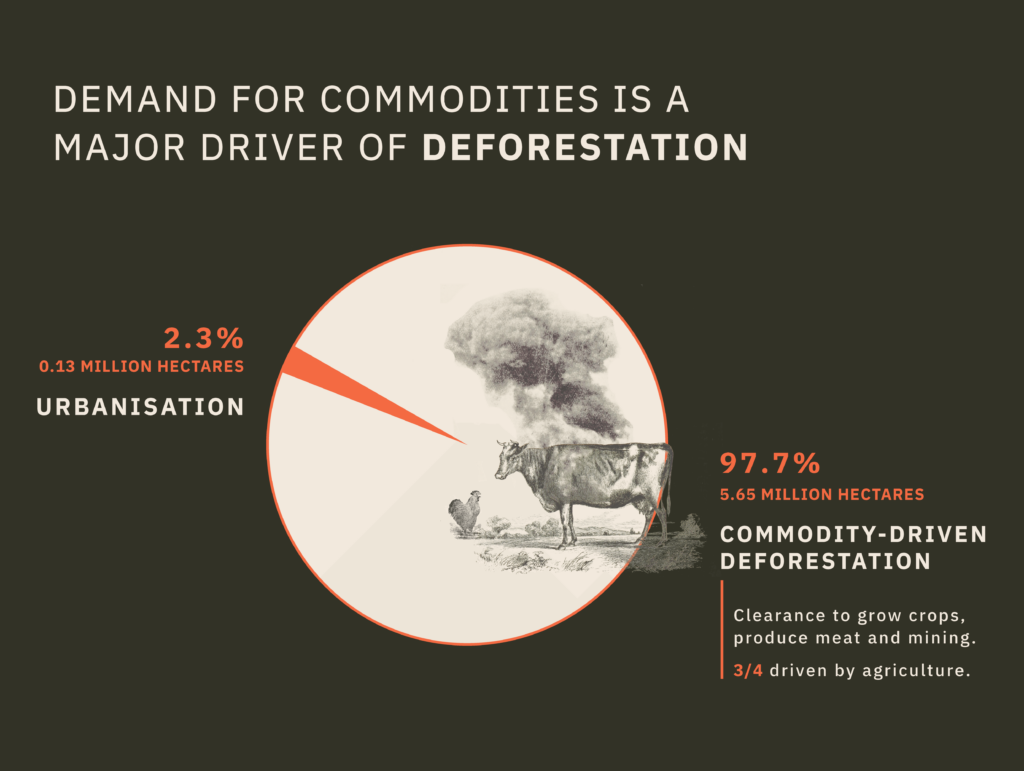
While industrial-scale beef production is the number one driver of global tropical deforestation, oilseeds such as soy and palm oil are a significant area of concern.
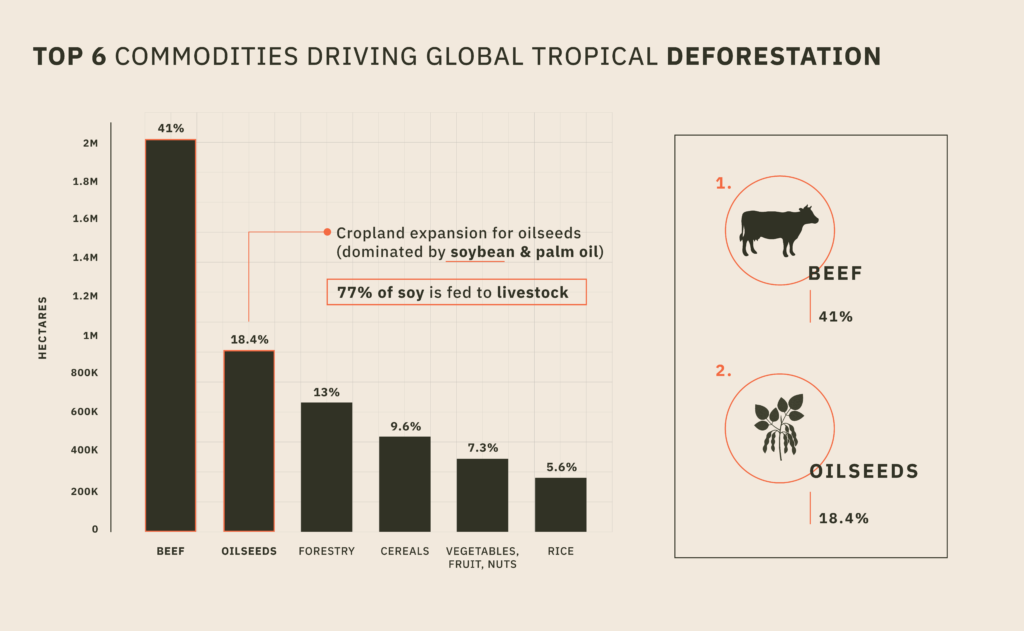
Determining the environmental impact of Soy is particularly challenging. While efforts over the last decade and a half have been largely successful at curbing new forest clearance in the Amazon for Soy plantations, cattle pastures continue to expand into the frontier, and soy is often planted in their wake (source).
SOY & BEEF PRODUCTION, 2020
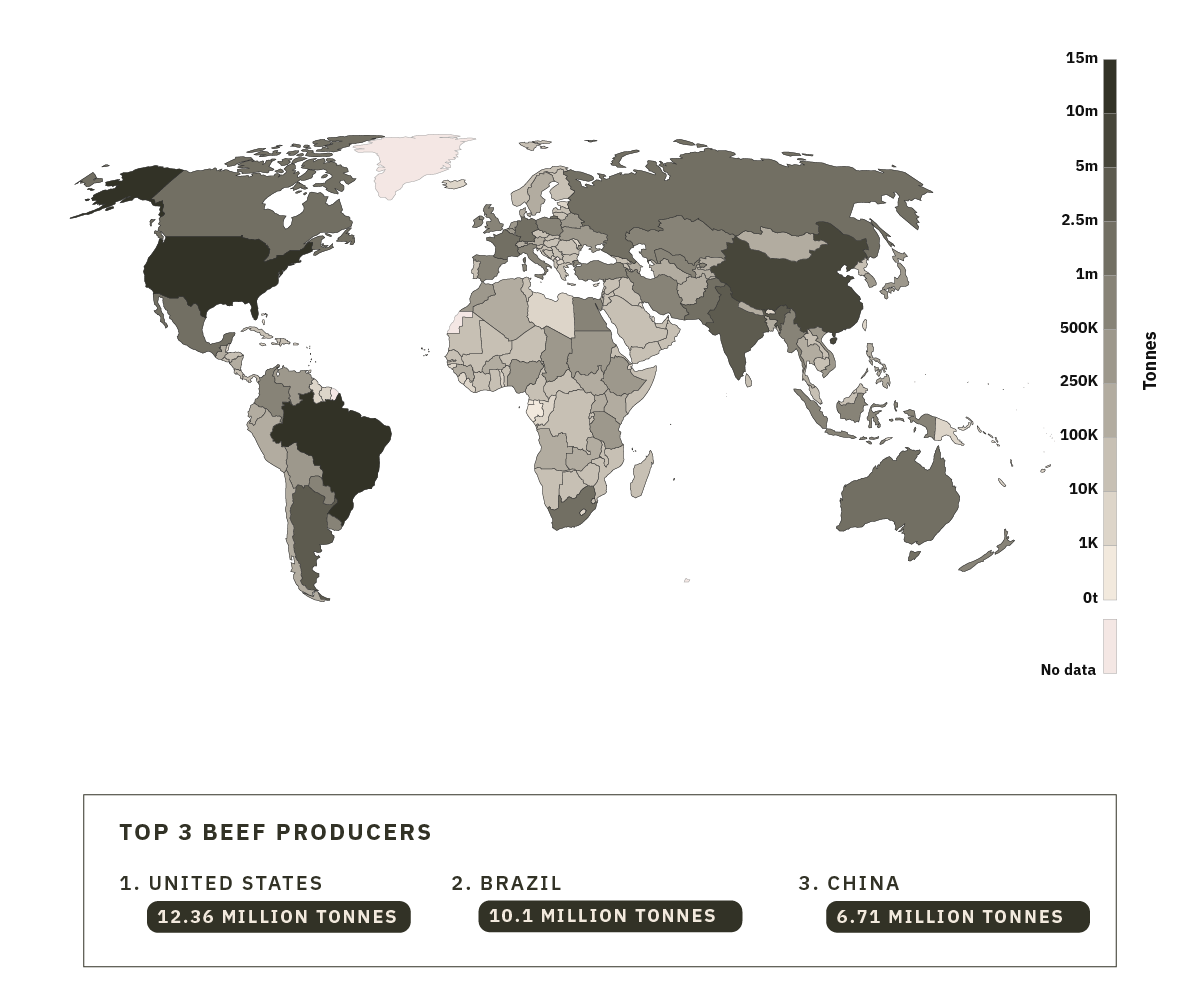
Similarly opaque to the general public is what’s really driving the demand for soy. It turns out that humans’ direct consumption of soy is relatively small, accounting for less than 6% of total demand. The overwhelming majority of soy is fed to the animals we raise as livestock; animals such as chickens, pigs and cattle.
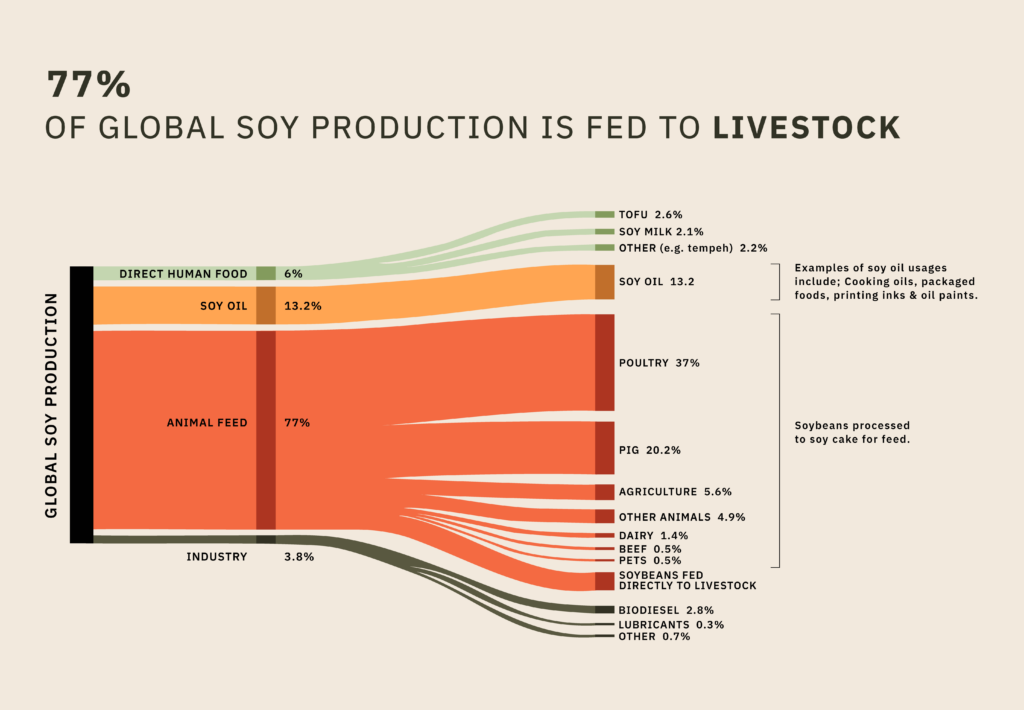
Chickens alone are fed a whopping 37% of the total soy produced. So while industrial chicken farming may require a fraction of the land required to produce the same quantity of beef or pork, its reliance on soy arguably undermines any claims on land-use efficiency.
Raising livestock on an industrial scale is a calorie and land-intensive process. The livestock sector alone uses over 80% of the world’s farmland, yet it provides only 18% of global calories. Looking closer at beef production, this contrast is even more apparent. Approximately 60% of global agricultural land is used to raise cattle, yet it accounts for less than 2% of global calories.
Aside from the highly questionable ethics of industrial-scale meat production, the environmental harms alone are a burden being felt – by and large – by those least responsible. Consumers – especially in rich countries – can make a difference.
The Story of Soy would not be complete, however, without following the money trail. Unsurprisingly, it tells of a few large actors responsible for the majority of livestock-driven deforestation. The International Finance Corporation (IFC) – the commercial lending arm of the World Bank – and the European Bank for Reconstruction and Development (EBRD) have provided $2.6bn (£2.1bn) for pig, poultry and beef farming, as well as dairy and meat processing, in the past 10 years. British-based banks and finance houses have also provided more than $2bn in financial backing in recent years to Brazilian beef companies which have been linked to Amazon deforestation.
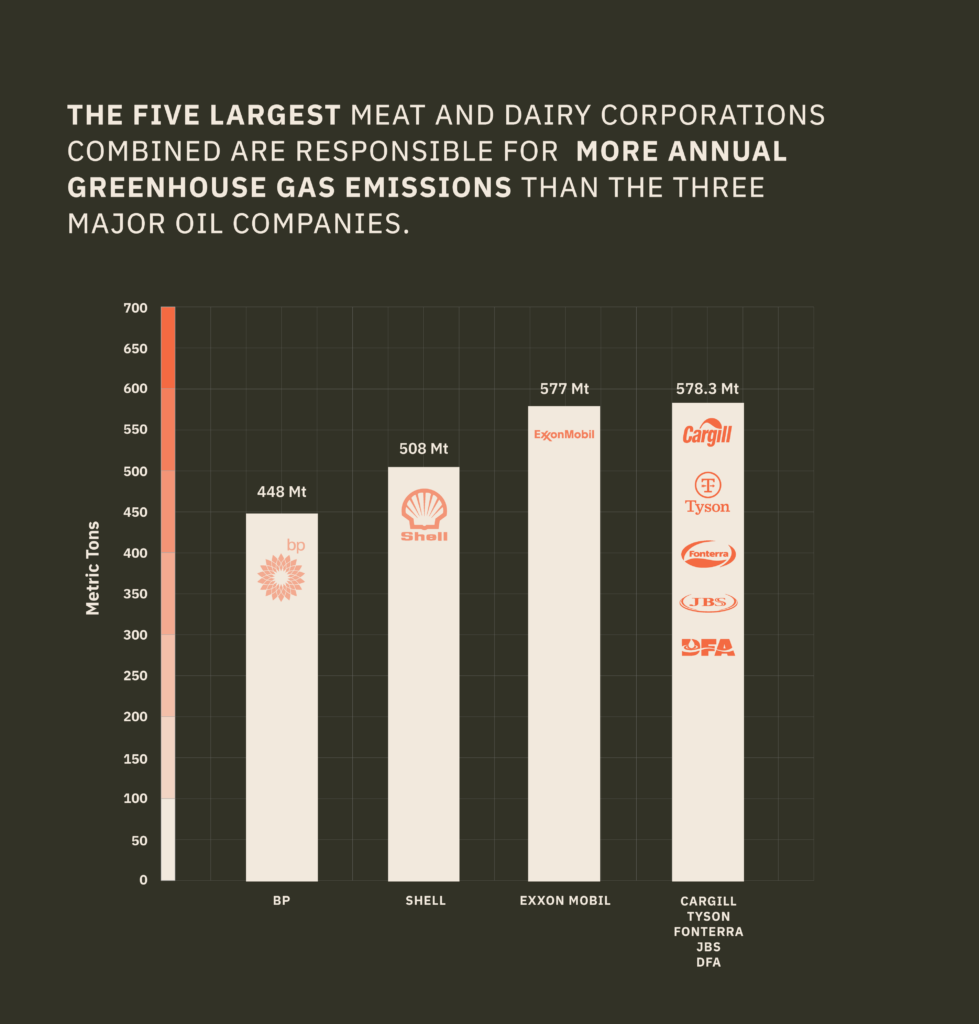
Under the logics of Capitalism, these corporations and many like them are by-and-large free to engage in extractive practices on an inconceivable scale. In addition to the financial support received from banks and financial institutions, they are free to do so in part because consumers – primarily in the global North – continue to purchase meat from their outlets and subsidiaries.
It has been the intention of this article to offer perspective on some of the Anthropocentric forces shaping and disrupting both human and animal lives as well as our planet’s biophysical life-support systems. Confronting the reality of our predicament may surface feelings of guilt and powerlessness for many. Yet there are actions we can take. Actions that may seem small at first – but which may at the same time find resonance with one another – leading, every once and a while, to more profound shifts in society and culture.
+ IMPACT CALCULATOR
Explore the positive impact of shifting your diet.
Click & drag the sliders to select both your current consumption and what you could aim for. Click calculate when you’re ready to visualise your impact.
* Calculator based on industrial livestock farming
Source of data compilation: https://www.omnicalculator.com/ecology/meat-footprint
Credit (data compilation & research, Omnicalculator): Hanna Pamuła, PhD candidate and Aleksandra Zając, MD
Data sources:
- Carbon footprint & land use: Reducing food’s environmental impacts through producers and consumers
- Water footprint: A Global Assessment of the Water Footprint of Farm Animal Products
- CO2 equivalents- phones charged, gasoline consumed, distance driven by car: EPA Greenhouse Gases Equivalencies
- CO2 tree absorption
